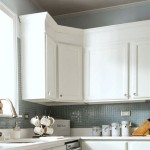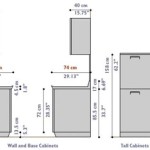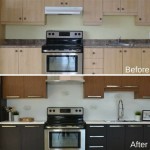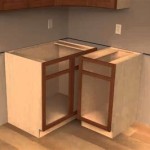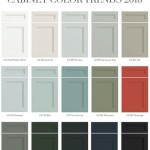Kitchen Cabinet Plate Organizers: Maximizing Space and Efficiency
Kitchen cabinet plate organizers are essential tools for maintaining an orderly and accessible kitchen. They address the common problem of stacked plates that are difficult to retrieve and prone to chipping or breakage. By providing a structured storage solution, these organizers improve kitchen efficiency and contribute to a more visually appealing and functional space.
The selection of an appropriate plate organizer depends on several factors, including the size and configuration of the kitchen cabinets, the quantity and size of the plates being stored, and the desired aesthetic. A wide variety of organizers are available, each with its own advantages and disadvantages. Understanding the different types and their suitability for specific needs is crucial for making an informed purchase.
Types of Kitchen Cabinet Plate Organizers
Kitchen cabinet plate organizers come in a diverse range of designs, materials, and functionalities. The most common types include vertical dividers, tiered shelves, adjustable organizers, and under-shelf racks. Each type caters to different storage needs and kitchen layouts.
Vertical Dividers: Vertical dividers are designed to separate plates standing on their edges. These organizers typically consist of a series of vertical bars or slots that hold plates upright, preventing them from leaning and potentially falling. They are particularly useful for storing a large quantity of plates of varying sizes. Vertical dividers can be made from wire, plastic, wood, or metal, and they are often adjustable to accommodate different plate thicknesses. The open design of vertical dividers allows for easy visibility and access to each plate.
Tiered Shelves: Tiered shelves create multiple levels of storage within a cabinet. These organizers feature a series of stacked shelves, each slightly shallower than the one below. This design allows for plates to be displayed and accessed easily. Tiered shelves are suitable for storing a smaller number of plates and are often preferred for displaying decorative or frequently used dinnerware. Materials used for tiered shelves include wood, metal, and plastic. The aesthetic appeal of tiered shelves can enhance the overall look of the kitchen cabinet.
Adjustable Organizers: Adjustable organizers offer flexibility in plate storage. These organizers typically feature adjustable dividers or shelves that can be repositioned to accommodate different plate sizes and quantities. This versatility makes them ideal for kitchens with varying storage needs. Adjustable organizers can be particularly useful for storing specialty dishes or seasonal dinnerware. The adjustability allows for customization based on the changing needs of the user. Materials for adjustable organizers commonly include plastic and metal.
Under-Shelf Racks: Under-shelf racks are designed to attach to the underside of a cabinet shelf. They create additional storage space without taking up valuable shelf space. These racks are typically used to store plates that are not frequently used or to store smaller plates, such as saucers or dessert plates. Under-shelf racks are often made of wire or metal and can be easily installed with screws or adhesive. This type of organizer is particularly useful for maximizing vertical space within a cabinet.
Materials and Construction
The materials used in the construction of kitchen cabinet plate organizers significantly impact their durability, stability, and aesthetic appeal. Common materials include metal, wood, wire, and plastic. Each material offers distinct advantages and disadvantages.
Metal: Metal plate organizers, often made of steel or chrome, are known for their durability and strength. They can withstand heavy loads and are resistant to rust and corrosion. Metal organizers typically have a sleek, modern appearance and are easy to clean. However, metal can be more expensive than other materials and may scratch delicate plates if not properly coated.
Wood: Wood plate organizers offer a classic and elegant look. They can be made from a variety of woods, such as bamboo, maple, or oak. Wooden organizers are often finished with a sealant to protect them from moisture and stains. Wood provides a warm and natural aesthetic to the kitchen. However, wood can be more susceptible to damage from moisture and may require more maintenance than other materials.
Wire: Wire plate organizers are a lightweight and affordable option. They are typically made of coated wire to prevent rusting and scratching. Wire organizers offer good visibility and ventilation. However, they may not be as sturdy as metal or wood organizers and can be less aesthetically pleasing. Wire organizers are often used for storing lightweight plates or for temporary storage solutions.
Plastic: Plastic plate organizers are a budget-friendly and versatile option. They are available in a wide range of colors and styles. Plastic organizers are lightweight, easy to clean, and resistant to moisture. However, they may not be as durable as metal or wood organizers and can be prone to cracking or breaking under heavy loads. Plastic organizers are a suitable option for light-duty storage needs.
The construction of the plate organizer is also critical. Sturdy construction ensures that the organizer can withstand the weight of the plates and maintain its shape over time. Welded joints, reinforced corners, and durable finishes are indicators of quality construction. It is important to examine the construction of the organizer before purchasing to ensure its longevity and functionality.
Factors to Consider When Choosing a Plate Organizer
Selecting the right kitchen cabinet plate organizer requires careful consideration of several factors, including cabinet dimensions, plate size and quantity, desired accessibility, and aesthetic preferences. Evaluating these factors ensures that the chosen organizer meets the specific needs of the kitchen and the user.
Cabinet Dimensions: The dimensions of the kitchen cabinets are a primary consideration when selecting a plate organizer. The organizer must fit comfortably within the cabinet without obstructing the door or interfering with other items stored in the cabinet. Measure the height, width, and depth of the cabinet interior before purchasing an organizer. Consider any obstructions, such as pipes or electrical outlets, that may affect the available space. Choosing an organizer that is too large or too small can render it ineffective.
Plate Size and Quantity: The size and quantity of plates that need to be stored will influence the type and size of the organizer required. If storing a large number of plates, a vertical divider or a tiered shelf may be the most appropriate option. If storing plates of varying sizes, an adjustable organizer may be necessary. Consider the diameter and height of the plates when selecting an organizer to ensure that they fit comfortably and securely. Overloading an organizer can compromise its stability and potentially damage the plates.
Accessibility: The desired level of accessibility is another important factor. If frequently used plates need to be easily accessible, a tiered shelf or an open-design vertical divider may be preferred. If storing plates that are not frequently used, an under-shelf rack or a less accessible section of the cabinet may be sufficient. Consider the frequency with which different plates are used and choose an organizer that facilitates easy retrieval. Poor accessibility can lead to frustration and inefficiency in the kitchen.
Aesthetic Preferences: The aesthetic of the plate organizer should complement the overall style of the kitchen. If a modern look is desired, metal or plastic organizers may be preferred. If a more traditional look is desired, wood organizers may be a better choice. Consider the color and finish of the organizer to ensure that it blends seamlessly with the existing kitchen décor. A visually appealing organizer can enhance the overall look of the kitchen and create a more pleasant cooking environment.
Ease of Cleaning: It's very important that the organizer is easy to clean and maintain. Kitchen spills or dust can easily get on the shelves of the cabinet. In that case, a cleaner friendly material such as plastic or metal are good ideas.
By carefully considering these factors, one can select a kitchen cabinet plate organizer that maximizes space, improves efficiency, and enhances the overall functionality of the kitchen.

Diy Inside Cabinet Plate Rack Remodelando La Casa

Kitchen Cabinet Accessories Stainless Steel Built In Dish Tray Plates Drying Storage Rack China And Drip Made Com

Bringing Back A Classic 25 Trendy Ways To Add Plate Rack Decoist

13 Ways To Add A Plate Rack Your Kitchen

2 Layer Kitchen Drain Cupboard With Lid Tableware Put Dish Rack Household Countertop Multifunctional Storage Lazada Ph

Pull Out Cabinet Bowl And Plate Rack Under Organizer With Single Tier Kitchen Storage For Draining Storing Bowls Plates China Plastic Container Food Made In Com

A Spring Inspired Kitchen Country Designs Plate Racks In Diy Storage

Plate Holder Organizer Kitchen Cabinet Storage Shelves For Rv Home Cupboard Double Layer Com

Cabinet Dish Rack Kitchen Organizers Metrostar Hardware

Stainless Steel Bowl Dish Storage Rack Kitchen Cabinet Base Unit Organizer Pull Out Tray Design Drainage Function Shein
Related Posts

